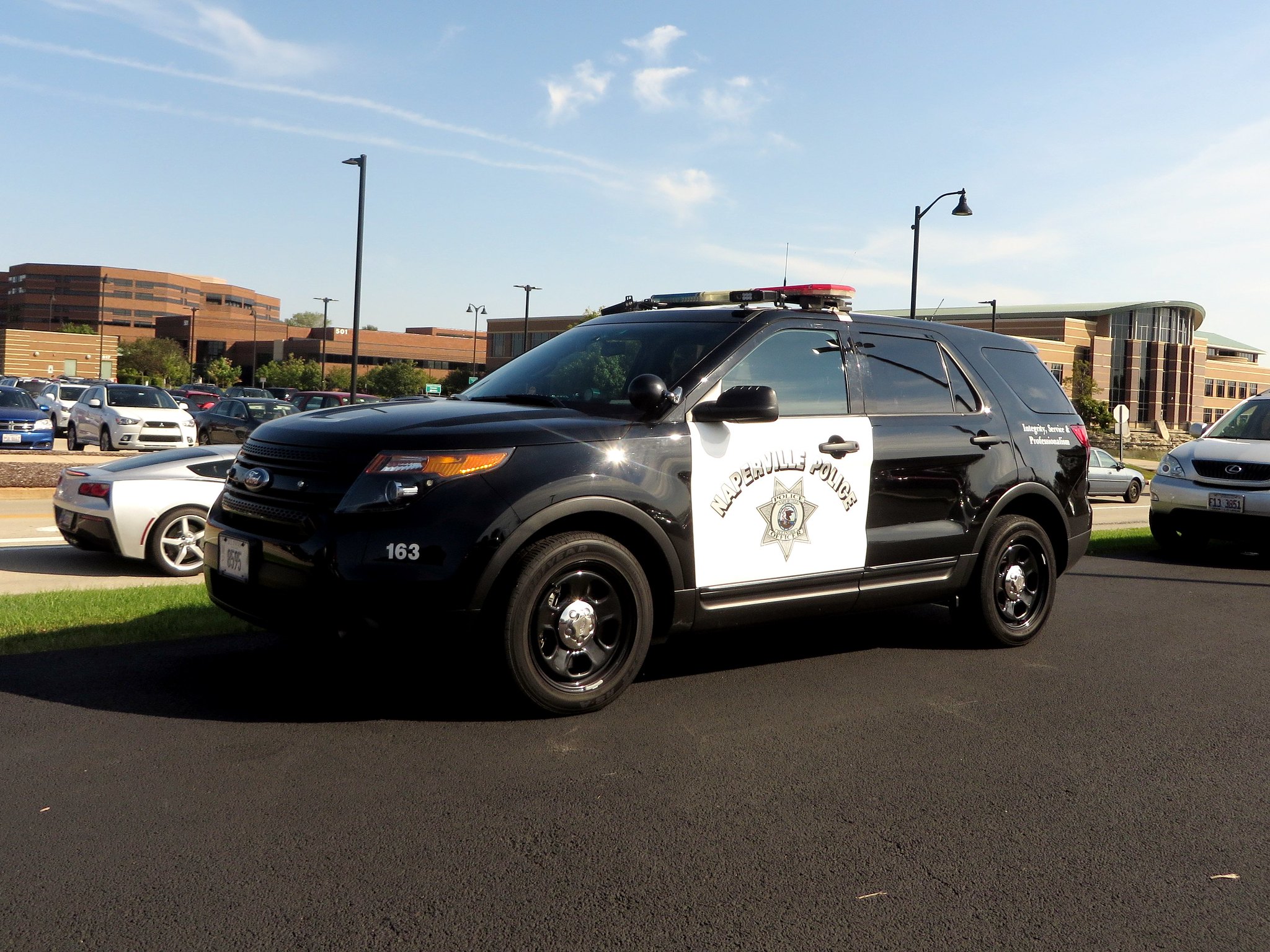How to Fix the Financial Gymnastics of Police Misconduct Settlements
Abolishing qualified immunity, moving police misconduct payouts to police department insurance policies and having individual officers carry liability insurance could help transform policing in the United States.

Published by The Lawfare Institute
in Cooperation With

On March 12, the City of Minneapolis agreed to pay George Floyd’s family $27 million for his wrongful death via the knee of a police officer. Despite being the largest pretrial civil rights settlement, it is only a fraction of the taxpayer money spent on settling police brutality. From 2015 to 2019, more than $2 billion, mostly taxpayer money, was used on civilian payouts for police misconduct in only the 20 largest police departments.
Derek Chauvin, the police officer currently on trial for Floyd’s death, is charged with second-degree murder, third-degree murder and second-degree manslaughter. The current structure for addressing civilian payouts for police misconduct overwhelmingly absolves officers like Chauvin from any financial culpability. This is mostly due to qualified immunity, which is a court doctrine that absolves police officers from civil liability. While qualified immunity often shields government officials broadly from personal liability, it is particularly used with law enforcement. And though it is applicable only to civil proceedings, prosecutors, defense attorneys, judges and even jurors are often swayed during grand juries and criminal proceedings by the protection of qualified immunity.
Depending on the state, officers accused of misconduct might even keep their police pension and even be able to sue the municipality for back pay if they are fired and then found criminally not guilty. The money for civilian payouts for police misconduct does not come from police department budgets. Rather, civilian payouts overwhelmingly come from general funds, though some come from bonds and even insurance policies, particularly in smaller areas.
It is clear that alternatives to addressing civilian payouts are warranted. Recommendations include abolishing qualified immunity, moving payouts to police department insurance policies and having individual officers carry liability insurance. A combination of these options may be needed to increase accountability, reduce police killings and eradicate racial disparities in police use of force.
Besides the settlement for Floyd’s death, a series of notable civil settlements for police misconduct include $38 million in Baltimore County, Maryland, for the wrongful death of Korryn Gaines and the accidental shooting of her four-year-old son, Kodi; $20 million in Prince George’s County, Maryland, for the wrongful death of William Green; $12 million for the wrongful death of Breonna Taylor of Louisville, Kentucky; and $6 million in Cleveland, Ohio, for the wrongful death of 12-year old Tamir Rice, who was killed while playing with a toy gun in a park. All the people mentioned above are Black. These cases are not cherry-picked but, rather, are part of a much larger systemic problem in policing and municipal government. Black people are roughly 2.5 times as likely as whites to be killed by police. Blacks are 3.5 times more likely to be killed by police when they are not attacking or do not have a weapon relative to whites, like Floyd, Green and Rice. Black women are disproportionately more likely to be killed in their homes by police, like Taylor and Gaines.
There are also many incidents that do not end in death but will probably result in civilian payouts for police misconduct. Some of the most recent incidents include a five-year-old who was arrested and yelled at by police after leaving school in Montgomery County, Maryland, as well as Marion Humphrey Jr., a 32-year-old law student who was detained for more than two hours as state troopers in Arkansas searched his U-Haul. Humphrey, the son of a retired judge, has already sued the Arkansas State Police.
But, whites are killed and brutalized by police too, like Daniel Shaver in Arizona, James Scott in North Dakota and Brandon Stanley in Kentucky. Though Black people and Native Americans are disproportionately more likely to be killed by police, in absolute numbers, there are more white people killed by police than other groups because they represent roughly 65 percent of the U.S. population.
Shaver was killed in a hotel hallway by police officer Philip Brailsford. Police were called after someone saw Shaver brandishing a gun outside of his hotel window. Brailsford, who had “you’re fucked” written on his police rifle, was initially fired. Once he was found not guilty of second-degree murder and manslaughter, the Mesa Police Department reinstated Brailsford. In turn, he was able to apply for disability, due to mental anguish from the trial, and retire to receive his $2,500 a month pension. Brailsford’s pension settlement also gave him up to $3 million for legal defense and a guarantee of a “neutral reference” for job applications. All four officers involved in Shaver’s killing were granted immunity from any financial liability, while the city faces multiple civil lawsuits regarding Shaver’s killing. The Brailsford agreement is not an anomaly. It is part of a funding structure regarding settlements for police misconduct that often absolves, and even awards police, while leaving taxpayers holding the financial bag.
Funding Structure of Civilian Settlements for Police Misconduct
The funding structure for civilian settlements for police misconduct is noteworthy. The equation includes not only cash settlements but also extremely high lawyer fees that are frequently paid on an hourly, billable basis. Case in point: Roughly 120 police officers in Prince George’s County—mainly Black, Latino and women officers (but there were some white officers)—signed onto a Department of Justice complaint. The complaint alleges systemic problems regarding promotion and discipline, including the failure to promote minority officers and hand out the same discipline to white officers as to their Black counterparts for similar or more egregious actions. Some of the cases made it to court. To represent the police department against its own officers, Prince George’s County hired outside counsel. As of late 2020, the county had spent more than $6 million in lawyer fees alone.
A bad decision or accident by a police officer, as well as internal corruption, puts a strain on local governments that can derail racial progress and financial stability. At times, municipalities do not even have the funds to cover police misconduct settlements. In these cases, the financial burden may fall on residents. For example, the Beatrice Six in Nebraska were falsely accused of the rape and murder of Helen Wilson in 1985. They were exonerated in 2009 and awarded $28 million in 2016. However, Beatrice, Nebraska, did not have the funds to cover the settlements, and Gage County had to raise property taxes to the highest amount permitted by law. Payments are made biannually to the six claimants to align with property tax assessments. Similarly, for a police brutality settlement, some cities, like San Bernardino, California, have filed for bankruptcy and have civil settlements mostly related to police brutality that may go unpaid. Inkster, Michigan, raised taxes on its residents, one in three of whom are already in poverty. However, the police misconduct settlement led the city to hire a Black police chief who diversified the department and implemented a community policing model that decreased crime and improved police-community relations. But these changes came at the expense of the city’s school system, which closed, despite rising tax costs.
Other cities, like Chicago, sell bonds to help cover the costs of these police misconduct settlements. The interest and fees associated with these bonds are astronomically high. Chicago even appropriates funding to preemptively pay for impeding civil lawsuits on behalf of its police department. This means that the family of Laquan McDonald, who was shot in the back multiple times by police, had some of their own money preappropriated to later pay them the $5 million settlement.
Because Chicago budgeted only about $20 million for police misconduct settlements, it used what are informally called “police brutality bonds” to cover its $225 million in settlements. Unlike other bonds, police brutality bonds often do not affect a city’s credit rating. And again, this money does not include the lawyer fees, which cost the city $13 million in 2015 alone. In addition to aiming to implement changes related to police training, deescalation, and the use of force, then-Mayor Rahm Emmanuel proposed increasing appropriation funds to cover police misconduct settlements.
Even more egregious are the financial implications of the funding for bond fees, appropriated funding, and civilian payouts for police misconduct more broadly. In a 2018 report, the Action Center on Race & the Economy described police brutality bonds as “financial instruments that transfer resources and extract wealth from Black and poor communities to Wall St., through the fees banks charge cities for the bonds.” Moreover, funding that should go toward education, work infrastructure, and health care is fueling police brutality of those same disenfranchised people in underserved neighborhoods, as is the case from Inkster, Michigan, to Gage County, Nebraska.
Alternatives to Tax Money for Civil Settlements
Municipalities are starting to make significant changes to address civilian settlements for police misconduct, starting with ending qualified immunity. New York City, which paid more than $175 million in civilian settlements for police misconduct in 2019 alone, recently voted to end qualified immunity for law enforcement. Colorado ended qualified immunity in 2020. This means that in both places police officers can now face civil culpability for brutality. Colorado even passed a law requiring police officers to pay 5 percent of misconduct settlements, up to paying $25,000.
Police department insurance policies as well as individual officer liability insurance are two other proposals for restructuring civilian payouts for police misconduct. Under the police department insurance model, the premium is paid by the municipality. To increase accountability, the premium should come from the police department budget. Departments with more misconduct settlements should not simply be given higher yearly budgets to cover higher premiums. Instead, the premium costs should be taken into account when departments ask for budget increases. Under the individual officer liability insurance model, the premium is paid by the individual officer. Requiring officers to hold individual liability insurance will increase accountability and may lead to a restructuring in how the Fraternal Order of Police union approaches its membership. Collectively, these would be important changes to take the undue burden off of taxpayers and restore communities, rather than paying for the overpolicing of those communities.
Police department insurance policies may give the municipality and the police chief leverage to justify the removal of “bad apple” officers who cost them substantial payouts. Likewise, officers carrying their own liability insurance may lead to some of them being uninsurable. In turn, community members will be protected from the behavior of bad officers, and good officers will be shielded from working with them. Insurance may also protect municipalities from police misconduct settlements they cannot afford. Minneapolis has proposed having the insurances operate in tandem by carrying a police department insurance policy and requiring officers to carry their own liability insurance. If a payout leads to a higher premium, the officer’s policy will cover the difference in the budget. This is an innovative approach.
Because most law enforcement agencies are small (with about 85 percent serving areas with fewer than 25,000 people), police department insurance policies are one of the only ways for them to protect themselves. While police killings in large metro areas get headlines, police kill more people in suburban and rural areas. And there are many other incidents that do not lead to someone’s death but do lead to large police misconduct settlements. For example, Niota, Tennessee, has a police department of three officers. In 2011, two of them were involved in the bloodied beating of a motorist, and the city is being sued for a $35 million civil settlement. The insurer—Niota did not have insurance alone but, rather, was part of a risk pool with other agencies of similar size—told Niota to either remove the officers or lose coverage. As a result, Niota fired the problematic officers from its police department.
Just as insurance companies regulate the risk of someone being allowed to drive a vehicle or perform a surgical procedure, they also play a role in who should be allowed to protect, serve and police our streets. At times, the entire department can become uninsurable. Maywood Police Department in California accrued more than $15 million in settlements for police misconduct in five years. For failure to meet the insurer’s plan to address police misconduct, the department lost coverage and closed in 2010. Though this may seem detrimental, it can actually be a positive to rid an area of bad officers and a corrupt department. Maywood, located outside of Los Angeles, was a department with several officers who left other departments because of misconduct and/or criminal activity.
Altogether, there is a mismatch between what police are trained and take the allowances to do versus what the courts and insurers believe they should be doing. The word “reform” no longer seems adequate. Changing policing in the United States requires transformation. Reimagining how civilian payouts for police misconduct are addressed is an important start.





